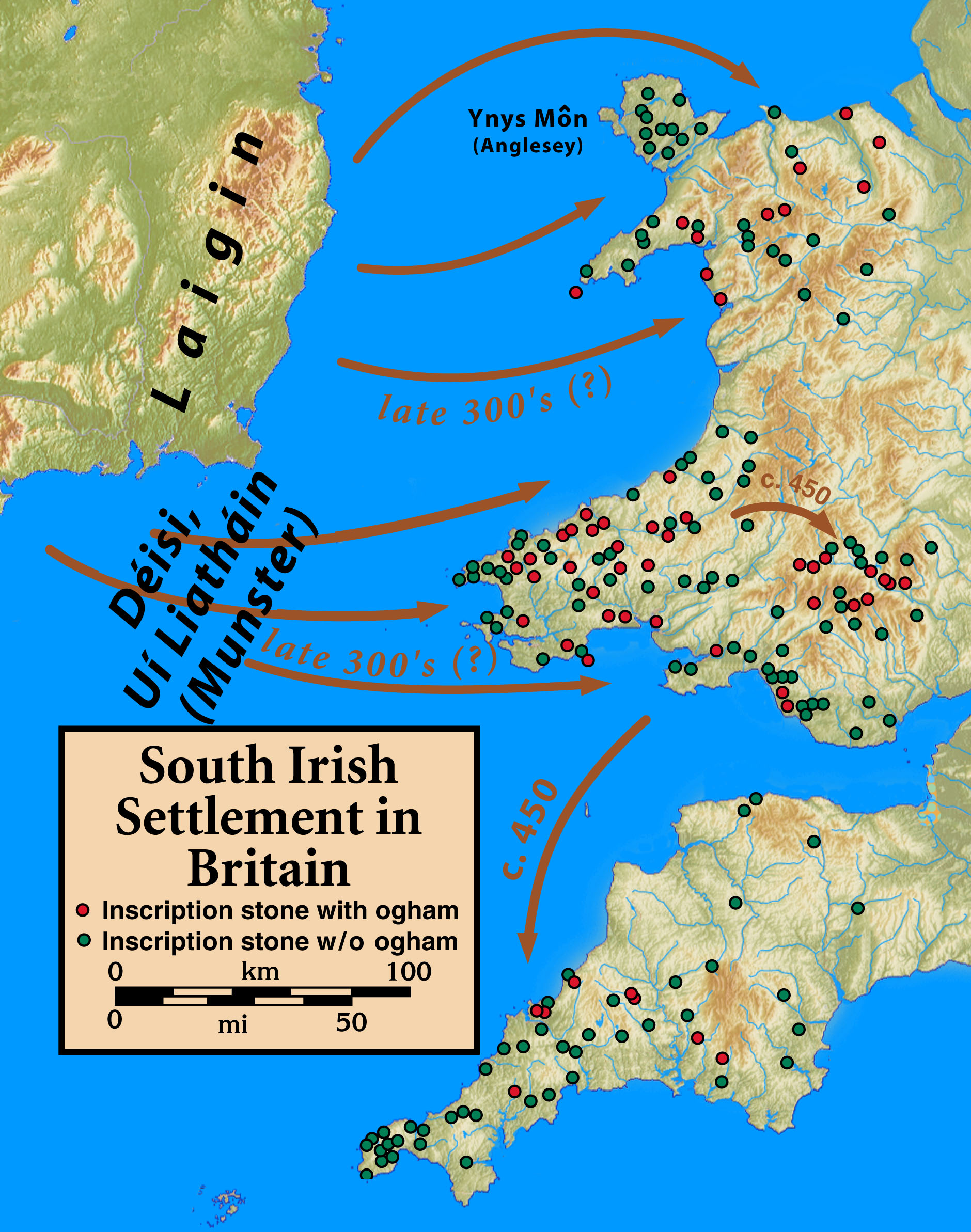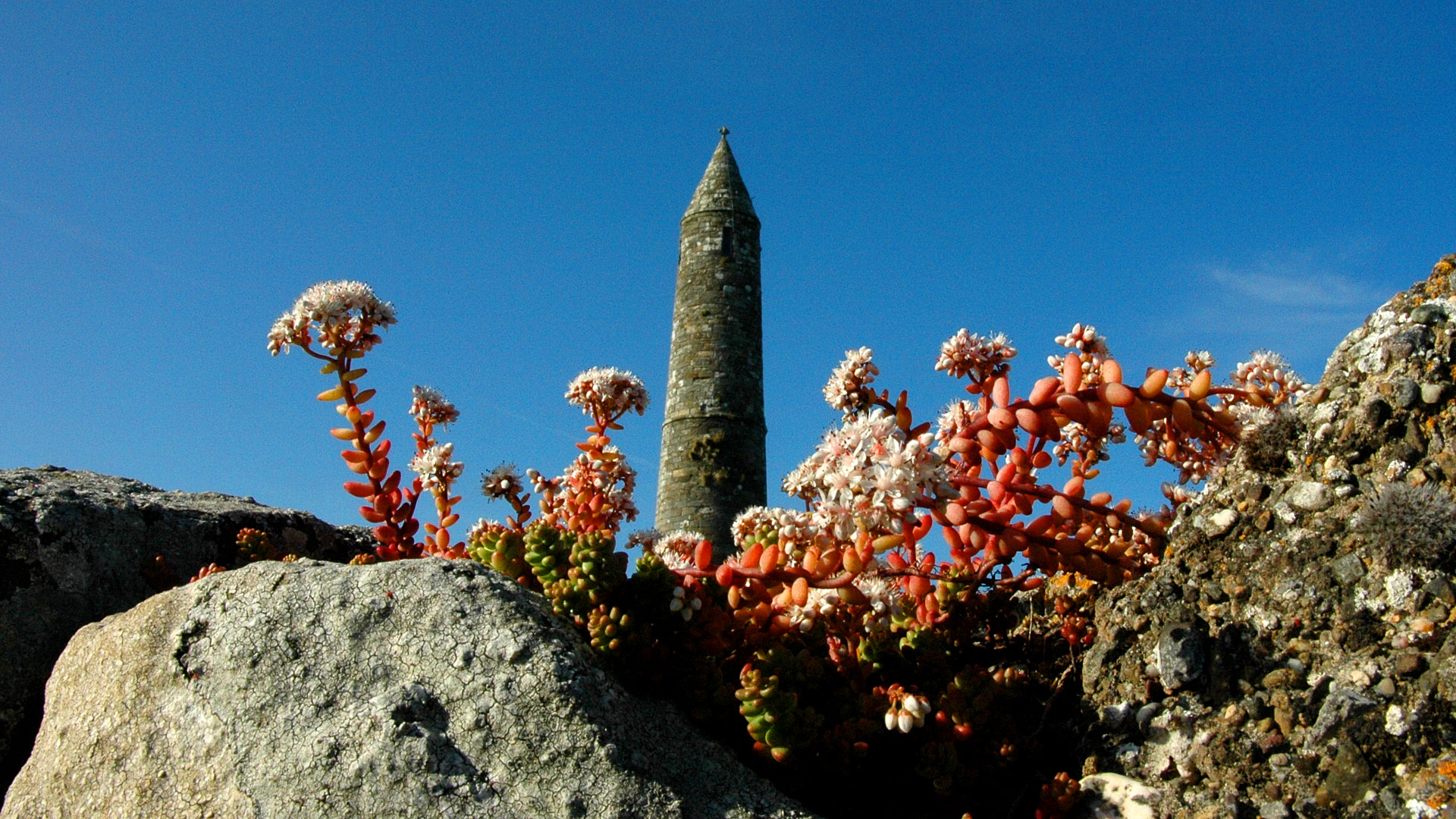|
Battle Of Móin Mhór
The Battle of Móin Mhór was fought in 1151 between the kingdoms of Leinster and Thomond in Ireland. The Kingdom of Leinster was victorious. Background The entire Province of Munster was under the control of the O'Brien (Ua Briain) clan under the leadership of Toirrdelbach Ua Briain and his son Muirchertach from 1072-1114. Their capital was located in Limerick. In a bid to secure the High Kingship of Ireland for the clan, Muirchertach encouraged ecclesiastical reform in 1111 with the creation of territorial dioceses over the entire island. They had support for their bid from several foreign connections including the Norwegian king Magnus Bareleg and the Anglo-Norman baron Arnulf de Montgomery, who were both united to the clan through marriage in 1102. Their claim to the High Kingship was countered by the O'Neill (Uí Néill) clan in Ulster under the leadership of Domnall MacLochlainn of Ailech. Though Muirchertach campaigned hard in the north, he was unable to obtain submi ... [...More Info...] [...Related Items...] OR: [Wikipedia] [Google] [Baidu] |
Leinster
Leinster ( ; or ) is one of the four provinces of Ireland, in the southeast of Ireland. The modern province comprises the ancient Kingdoms of Meath, Leinster and Osraige, which existed during Gaelic Ireland. Following the 12th-century Norman invasion of Ireland, the historic "fifths" of Leinster and Meath gradually merged, mainly due to the impact of the Pale, which straddled both, thereby forming the present-day province of Leinster. The ancient kingdoms were shired into a number of counties for administrative and judicial purposes. In later centuries, local government legislation has prompted further sub-division of the historic counties. Leinster has no official function for local-government purposes. However, it is an officially recognised subdivision of Ireland and is listed on ISO 3166-2 as one of the four provinces of Ireland. "IE-L" is attributed to Leinster as its ''country sub-division'' code. Leinster had a population of 2,858,501 according to the prelim ... [...More Info...] [...Related Items...] OR: [Wikipedia] [Google] [Baidu] |
Éile
Éile (; , ), commonly anglicised as Ely, was a medieval petty kingdom in the southern part of the modern county of Offaly and parts of North Tipperary in Ireland. The historic barony of Eliogarty was once a significant portion of the kingdom. Overview The clan or people of Éile claimed descent from Cian, a younger son of Ailill Aulom and brother of Eógan Mór, and thus had kinship with the Eóganachta. It has been suggested that the Éile were actually of Laigin origin, and that they may in fact have been the rulers of the Cashel area before the rise of the Eóganachta, as suggested by their role in Eóganachta origin tales, such as the '' Senchas Fagbála Caisil''. Their name is also associated with ''Cruachán Brí Éile'' the original name of Croghan Hill. Historian C. Thomas Cairney, stated that the Ely were from the tribes known as the Laigin who also had a branch known as the Dumnonii and who were the third wave of Celts to settle in Ireland during the first centur ... [...More Info...] [...Related Items...] OR: [Wikipedia] [Google] [Baidu] |
Battles Involving The Laigin
A battle is an occurrence of combat in warfare between opposing military units of any number or size. A war usually consists of multiple battles. In general, a battle is a military engagement that is well defined in duration, area, and force commitment. An engagement with only limited commitment between the forces and without decisive results is sometimes called a skirmish. The word "battle" can also be used infrequently to refer to an entire operational campaign, although this usage greatly diverges from its conventional or customary meaning. Generally, the word "battle" is used for such campaigns if referring to a protracted combat encounter in which either one or both of the combatants had the same methods, resources, and strategic objectives throughout the encounter. Some prominent examples of this would be the Battle of the Atlantic, Battle of Britain, and the Battle of France, all in World War II. Wars and military campaigns are guided by military strategy, whereas batt ... [...More Info...] [...Related Items...] OR: [Wikipedia] [Google] [Baidu] |
Declán Of Ardmore
Declán of Ardmore (; ; ; died 5th century AD), also called Déclán, was an early Irish people, Irish saint of the Déisi Muman, who was remembered for having converted the Déisi in the late 5th century and for having founded the monastery of Ardmore, County Waterford, Ardmore (''Ard Mór'') in what is now County Waterford.Johnston, "Munster, saints of (act. ''c''.450–''c''.700)." The principal source for his life and cult is a Latin ''Life'' of the 12th century. Like Ailbe of Emly, Ciarán of Saighir, Ciarán of Saigir and Abban of Magheranoidhe, Abbán of Moyarney, Declán is presented as a Munster saint who preceded Saint Patrick in bringing Christianity to Ireland. He was regarded as a patron saint of the Déisi of East Munster. Sources The main source for Declán's life and cult is a Latin hagiography, Life or ''vita'', which, however, survives only in a redaction of the late 12th century. It is witnessed by two manuscript texts which Charles Plummer has shown to deriv ... [...More Info...] [...Related Items...] OR: [Wikipedia] [Google] [Baidu] |
Déisi
The ''Déisi'' were a social class in Ireland between the ancient and early medieval period. The various peoples listed under the heading ''déis'' shared a similar status in Gaelic Ireland, and had little or no actual kinship, though they were often thought of as genetically related. During the era of Roman rule in Britain, many members of the Déisi were recorded as settling in western coastal areas (especially the areas known later as Wales, Cornwall and Devon). During the early Middle Ages, some Déisi groups and subgroups exerted great political influence in various parts of Ireland. For instance, in Munster, a subgroup of Déisi constituted a regional kingdom, Déisi Muman, and were part of the hegemony of the Eoganachta confederacy. Etymology Déisi is an Old Irish term that is derived from the word ''déis'', which meant in its original sense a "vassal" or "subject" and, in particular, people who paid rent to a landowner.Ó Cathasaigh, pp. 1-33. As such, it denoted a ... [...More Info...] [...Related Items...] OR: [Wikipedia] [Google] [Baidu] |
Ardmore, County Waterford
Ardmore () is a seaside resort and fishing village in County Waterford, Ireland, not far from Youghal on the south coast of Ireland. The village is in a civil parish of the same name. As of the 2022 census, the village had a population of 468. Ardmore is believed to be the oldest Christian settlement in Ireland. According to tradition, Saint Declan lived in the region in the early 5th century, and Christianised the area before the coming of Saint Patrick. In September 2014, Ardmore was included on a shortlist of Ireland's top tourist towns composed by Fáilte Ireland. It is home to the Michelin-starred restaurant, The House, at the Cliff House Hotel. History Ecclesiastical history Ardmore is associated with a 5th-century saint, Declán of Ardmore, who is reputed to have founded a monastery in the area. Declan, regarded as a patron saint of the Déisi of East Munster, is one of several Munster saints said to have preceded Saint Patrick in bringing Christianity to Ireland. A ... [...More Info...] [...Related Items...] OR: [Wikipedia] [Google] [Baidu] |
Synod Of Kells
The Synod of Kells (, ) took place in 1152, under the presidency of Giovanni Cardinal Paparoni, and continued the process begun at the Synod of Ráth Breasail (1111) of reforming the Irish church. The sessions were divided between the abbeys of Kells and Mellifont, and in later times the synod has been called the Synod of Kells-Mellifont and the Synod of Mellifont-Kells. Its main effect was to increase the number of archbishops from two to four, and to redefine the number and size of dioceses. The Primacy of Ireland was granted to the Archdiocese of Armagh. Background Máel Máedóc Ua Morgair (Saint Malachy) was made a priest in 1119, as vicar to Celsus. His first sees were Down and Connor, and he was located at Bangor Abbey. On the death of Celsus in 1129, Malachy was nominated as his successor at Armagh, now the prime see in Ireland. An internal church dispute over the succession and proposals for reform obliged him to concede the position to Gelasius. In 1137, Gela ... [...More Info...] [...Related Items...] OR: [Wikipedia] [Google] [Baidu] |
Thomond
Thomond ( Classical Irish: ; Modern Irish: ), also known as the Kingdom of Limerick, was a kingdom of Gaelic Ireland, associated geographically with present-day County Clare and County Limerick, as well as parts of County Tipperary around Nenagh and its hinterland. The kingdom represented the core homeland of the Dál gCais people, although there were other Gaels in the area such as the Éile and Eóganachta, and even the Norse of Limerick. It existed from the collapse of the Kingdom of Munster in the 12th century as competition between the Ó Briain and the Mac Cárthaigh led to the schism between Thomond ("North Munster") and Desmond ("South Munster"). It continued to exist outside of the Anglo-Norman-controlled Lordship of Ireland until the 16th century. The exact origin of Thomond, originally as an internal part of Munster, is debated. It is generally held that the Déisi Muman pushed north-west starting from the 5th to the early 8th century, taking the area from the ... [...More Info...] [...Related Items...] OR: [Wikipedia] [Google] [Baidu] |
Tairrdelbach Ua Conchobair
Toirdhealbhach Mór Ua Conchobhair (old spelling: Tairrdelbach Mór Ua Conchobair; 1088 – 1156) anglicised Turlough Mór O'Conor, was King of Connacht (1106–1156) and High King of Ireland (ca. 1120–1156). Family background and early life Toirdelbhach was born in the year 1088. He was the youngest son of Ruaidrí na Saide Buide (died 1118), and his mother was Mór, daughter of Toirdelbach Ua Briain (1009–14 July 1086). Therefore, through his mother, his great-great-grandfather was Brian Boru. His brothers were Niall (killed 1093), Tadc (killed 1097), Conchobar (murdered 1103), and Domnall, King of Connacht (deposed 1106). There was at least one sister, Dubhchobhlaigh Bean Ua hEaghra of Luighne Connacht (died 1131). Ruaidrí was married to four or more women. According to the Annals of Tigernach, Toirdelbach's mother died the year he was born, suggesting his birth may have been arduous. In 1092, King Ruaidrí was blinded by Flaithbertaigh Ua Flaithbertaigh, an incident ... [...More Info...] [...Related Items...] OR: [Wikipedia] [Google] [Baidu] |
Diarmait Ua Briain
Diarmait Ua Briain (c. 1060 –1118) was an 11th-century Irish king who ruled Munster from 1114 to 1118. One of three sons of Toirdelbach Ua Briain, he was banished from Munster by his brother Muirchertach Ua Briain shortly after the death of their father in 1086. He lived in exile for several years while his brother ruled as King of Munster. He is believed to have been the commander of the Irish fleet that supported Rhys ap Tewdwr at the Battle of Mynydd Carn. In 1093, he reconciled with Muirchertach after recognizing his claim and was installed as ''dux'' of Waterford. He eventually succeeded his brother as acting King of Munster when his brother became seriously ill in 1114. After taking the throne, he banished Muircheartach and soon was involved in a four-year struggle for control of Munster. In 1116, he attacked Muirchertach and Brian Ua Briain ''"in violation of a mutual oath on the relics of Ireland"'' besieging Limerick. This resulted in Muirchertach making peace with Dia ... [...More Info...] [...Related Items...] OR: [Wikipedia] [Google] [Baidu] |






